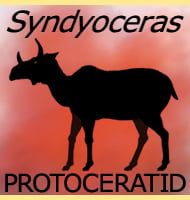Kekenodon
In Depth Originally though to be a member of the Archaeoceti, Kekenodon has more recently been considered to be a mysticetid (baleen) whale. Unfortunately the fragmentary nature of the holotype fossils makes is hard to be certain of distinct physical features about Kekenodon. Further Reading - Notes on New Zealand Cetacea, recent and fossil. - … Read more
